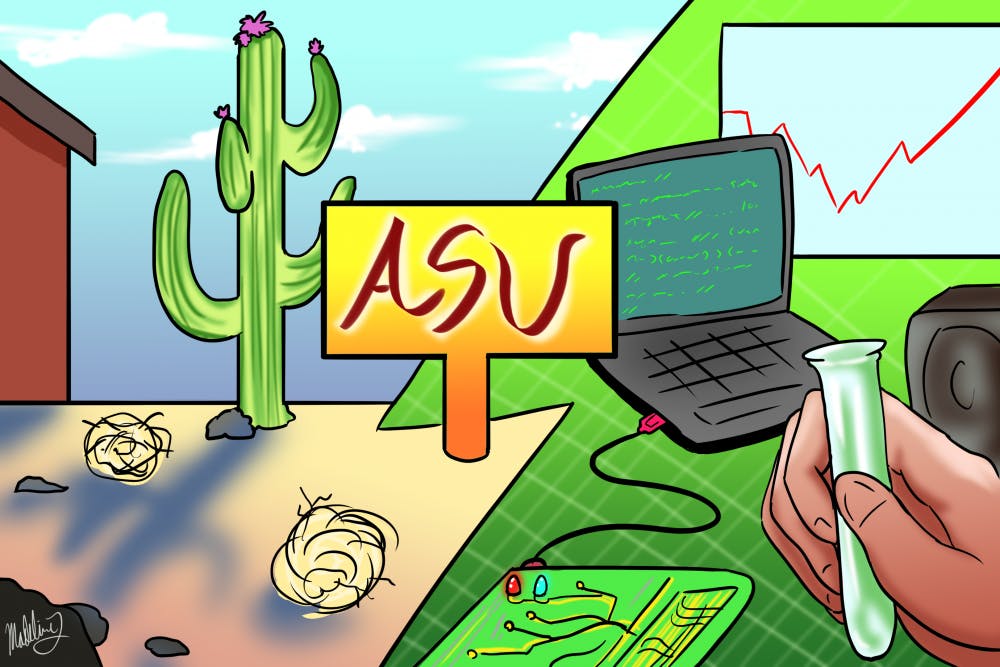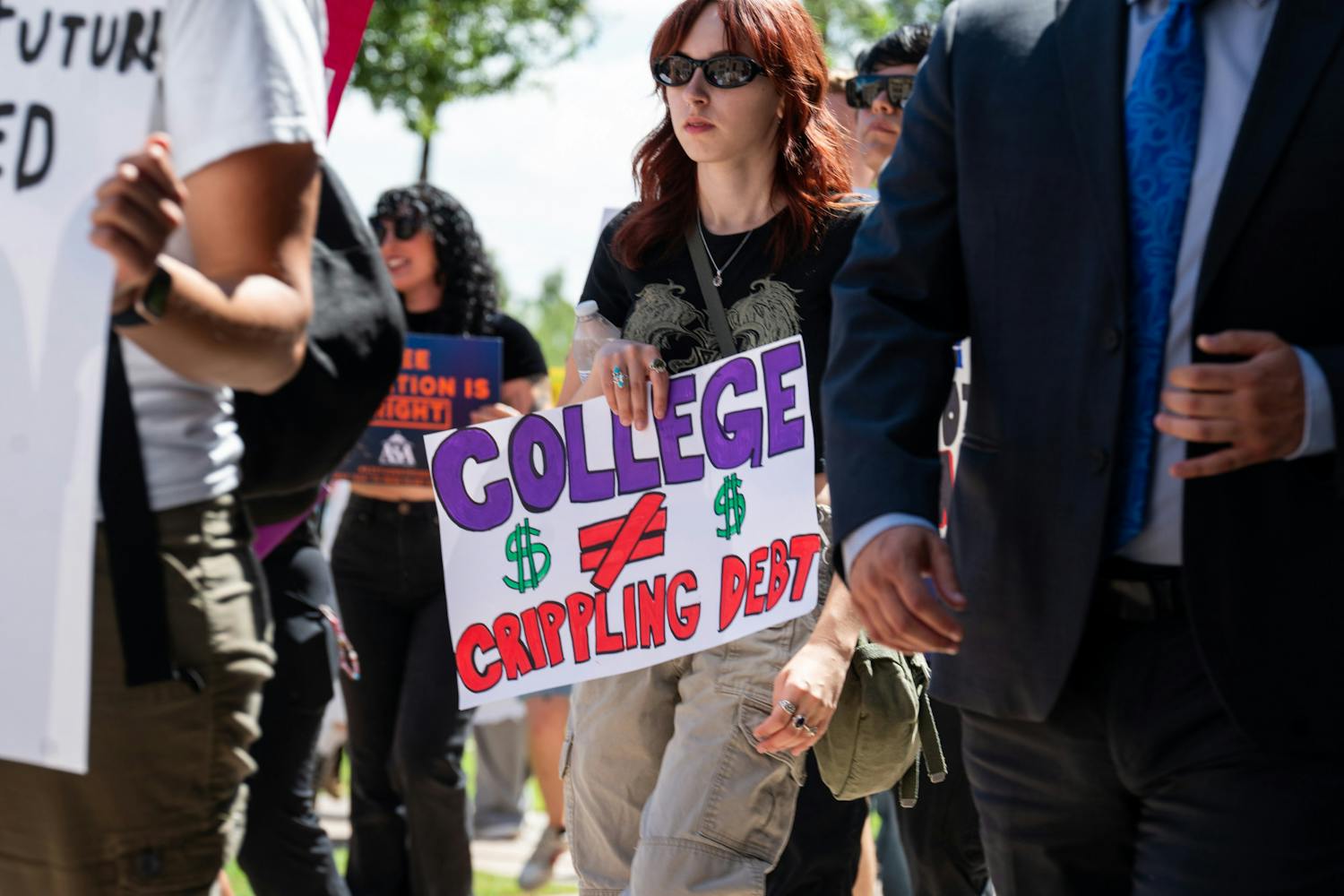For ASU students, it’s rare that a day goes by without seeing reminders of the University’s new direction, whether it is a sign reading “#1 in Innovation” or new building project.
Data from a National Science Foundation (NSF) ranking of university research expenditures places ASU No. 10 out of 724 institutions without a medical school.
“If you look at the growth that we have had over the last 15 years, we have gone from a $110 million research enterprise to close to $518 million of research in the past year,” said Sethuraman Panchanathan, executive vice president and chief research and innovation officer of Knowledge Enterprise Development.
ASU has seen a 162.2 percent increase in spending from 2004 to 2014, but is far from taking its foot off the throttle, Panchanathan said.
“We have a goal of $700 million of research expenditures by 2020 and $815 million dollars by 2025,” Panchanathan said. “Very few universities have research of that scale without a medical school. Those would be MIT, Berkeley, Georgia Tech, and other universities of that kind.”
While ASU’s ability to reach future expenditure goals is speculative, University officials have been strategic in where the research funds are allocated.
“We have strategically invested in concepts like the Biodesign Institute, Global Institute of Sustainability and Global Security Initiative … but, at the end of it all, it is all about the fact that we have outstanding faculty,” Panchanathan said.
ASU’s hiring of more highly qualified faculty for research is important, but it's researchers working across various fields that has produced the most results, ASU faculty members said.
ASU ranks high in National Science Foundation's research list https://t.co/LElOMGeMZR
— ASU Research (@ASUResearch) March 24, 2017
“Some of the most interesting and important challenges that face us, the things that people care about, fall between disciplines,” said Ariel Anbar, president's professor at the School of Earth and Space Exploration. “The questions that really matter tend to not be simply in chemistry or physics or climate change or something like that, but tend be in the boundaries.”
The expansion of the transdisciplinary approach has been the center of ASU’s new game plan to become a leader in research.
“ASU has always been a place that’s been more interested in transdisciplinary research than other institutions but President Crow, when he came here, really amped that up,” Anbar said.
While potentially not surprising to those familiar with the university, it has been Crow who has boisterously pushed for this new approach.
Anbar said he thinks Crow's approach is to make each department unique and invest in crossing disciplines.
"That’s the future," Anbar said. "And most other institutions don’t do that nearly as well."
Changes to make the University capable have been more than conceptual, however, each process have been restructured to streamline research.
“I’ve seen a complete restructuring of the Office of Research and Sponsored Projects Administration … they had to sort of conceptualize the structure that would serve the institution as it expanded,” said Carolyn Forbes, assistant director of the Center for the Study of Religion and Conflict. “So they really had to re-envision their processes, their workflows and how to make it easier for units to support faculty with research proposals and getting those proposals to funding agencies.”
So far, the new structure of offices handling research has been a success, Forbes said.
“They did an amazing job,” she said. “I think it’s probably one of the best reorganizations I’ve ever seen at the university and it really has made a huge difference.”
Research reform is far from perfection, however, as there are still areas for improvement in the University’s future.
“What I would like to see is a sort of investment in faculty hiring specifically in social sciences ... but not just social sciences, in the humanities also,” Forbes said.
Reach the reporter at jpleona1@asu.edu or follow @jpleonard123 on Twitter.
Like The State Press on Facebook and follow @statepress on Twitter.




